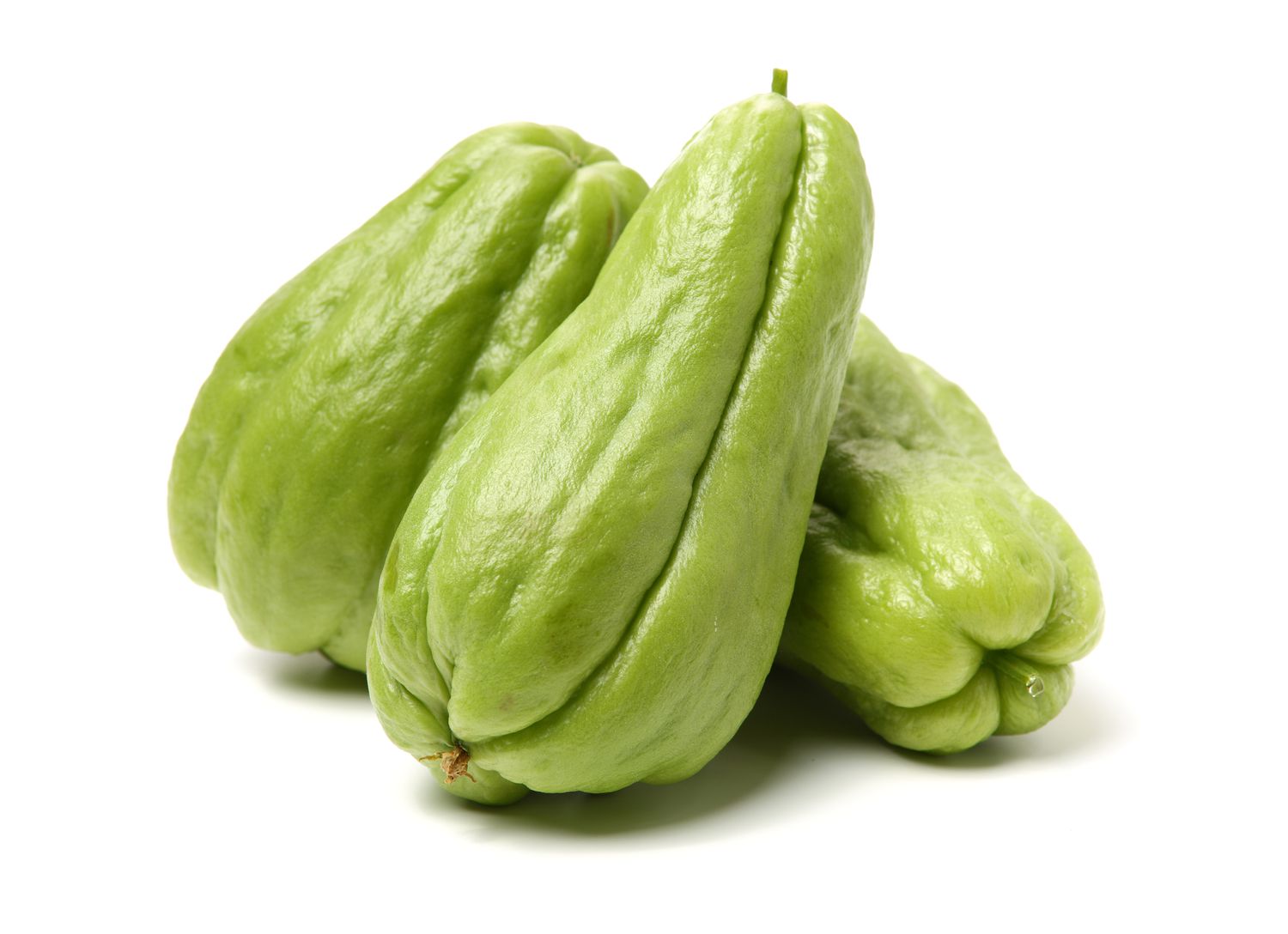Want to grow chayote squash? It’s easier than you think! Unlike other squash, you don’t need seeds—the whole fruit is your starting point. This guide will walk you through every step, from selecting the perfect chayote to harvesting a bountiful crop, answering your questions along the way, even those about using seeds (it’s trickier than you might think!). Let’s get growing!
Grow Your Own Chayote: From Fruit to Harvest
Let’s clarify: you won’t find tiny seeds inside a chayote like a pumpkin. The entire fruit is your planting material! This guide simplifies the process, even for beginner gardeners.
Choosing the Right Chayote
Selecting the right chayote is key. Look for a firm, healthy fruit without bruises or blemishes. Many experienced growers prefer older, slightly tougher chayotes, which may have a higher success rate. Think of it like choosing a ripe avocado—ready to go, but not overripe. You don’t need to search for “chayote squash seeds”—you won’t find them in the traditional sense!
Planting Your Chayote: Three Easy Methods
Here are three simple planting methods, each with advantages:
Direct Planting: Bury your chosen chayote about halfway into well-draining soil, pointed end up. It’s that simple! This is the most straightforward approach.
Water Propagation: Place the pointed end of the chayote downwards in a glass of water. Once roots sprout (this may take a few weeks), transplant into soil. This can improve success rates.
The Half-Buried Method: Bury the chayote halfway into nutrient-rich, well-draining soil, pointed end up. This is a popular and highly successful technique.
Ideal Growing Conditions: Soil and Sunlight
Chayote thrives in well-drained, fertile soil rich in organic matter. Amend your soil with compost. Choose a sunny spot with at least six hours of direct sunlight daily. Sunshine is essential for optimal growth!
Providing Support: Trellises and More
Chayote vines are vigorous growers, easily reaching 20 to 50 feet! Strong support is crucial. A sturdy trellis, strong wire fence, or even a robust post system will work perfectly. Think of it as providing a jungle gym for your chayote vine.
Ongoing Care: Watering, Feeding, and Pest Control
Your chayote needs consistent care:
Watering: Keep the soil consistently moist, especially during hot, dry spells. Avoid letting it dry out completely.
Fertilizing: Use a balanced, all-purpose fertilizer every few weeks, but avoid over-fertilizing.
Pest Control: Watch for common pests like aphids or squash vine borers. Organic pest control solutions are often safest and most effective.
Harvesting Your Chayote
You can typically harvest chayotes 6 to 8 months after planting, though this varies with climate and growing conditions. Harvest when they feel firm to the touch.
Culinary Delights: Cooking Your Chayote
Chayotes are incredibly versatile! Enjoy them raw in salads, boiled, steamed, or pickled. Their mild, slightly sweet flavor enhances many dishes.
Companion Planting: Boosting Your Harvest
Some gardeners find success with companion planting. Pumpkins and other squash varieties are often suggested, possibly deterring pests and enhancing growth. However, more research is needed to confirm these benefits definitively.
Understanding Chayote Growth: What We Know and Don’t Know
While these methods are generally successful, chayote growth is influenced by various factors: soil conditions, climate, and chayote variety. Ongoing research continues to explore optimal techniques and environmental impacts, potentially leading to future refinements of these methods.
Can You Grow Chayote from Seed? [https://www.lolaapp.com/can-you-grow-chayote-from-seed]
Most people start with the fruit, but growing from seed is possible, though trickier. It’s analogous to cloning (fruit propagation) versus sexual reproduction (seed propagation). Seeds offer greater genetic diversity.
Fruit propagation is simple: partially bury a mature chayote horizontally. The seed inside will sprout. Growing from seed, however, requires planting the whole fruit or a section containing the seed, as separating the seed might hinder germination.
From Sprout to Harvest: A Shared Journey
Whether starting with fruit or seed, the growing process shares similarities:
Soil and Planting: The Right Conditions
Well-drained, fertile soil and a sunny location are essential. Give each plant ample space (potentially a 50-foot vine!).
Support Structures: Essential for Climbing
Chayotes need sturdy support to grow vertically (trellises, fences, posts). This keeps vines off the ground, preventing rot and ensuring sunlight.
Watering and Feeding: Consistent Care
Consistent watering, especially during dry spells, and regular fertilization are crucial for robust growth and a plentiful harvest. Use a balanced fertilizer.
Pest Patrol: Protecting Your Plants
Monitor for pests like aphids and squash vine borers. Organic pest control methods (neem oil, insecticidal soap) are effective. Early detection is key.
Harvesting: The Rewarding Moment
Harvest mature chayotes (firm and smooth) after 4-6 months (timing can vary).
Seed vs. Fruit Propagation: A Comparison
| Feature | Seed Propagation | Fruit Propagation |
|---|---|---|
| Difficulty | More challenging | Easier |
| Success Rate | Potentially lower | Generally higher |
| Genetic Diversity | High | Low |
| Time to Harvest | Might take longer | Usually faster |
| Effort | More involved | Less work |
Ongoing research might refine these techniques. Experiment to find what best suits your conditions!
Growing Chayote in the UK [https://www.lolaapp.com/how-do-you-grow-chayote-in-the-uk]
Growing chayote in the UK requires careful planning and a head start indoors. Starting with the whole chayote fruit is much more reliable than attempting seed germination.
Getting Started: Finding and Planting
Start indoors in late spring (April/May) for a crucial head start. Transplant outdoors (June/July) to a sunny spot—a south-facing wall offers protection. Chayote vines grow long, so you’ll need a strong trellis or fence (at least 6 feet high and wide).
Soil Prep and Planting
Use well-drained, rich soil amended with compost. Bury the chayote horizontally, halfway, pointed end slightly upward. Water thoroughly.
Ongoing Care: Water, Feed, and Protect
Water regularly (avoid waterlogging). Fertilize every few weeks with a balanced, organic fertilizer. Protect from slugs and snails; monitor for fungal diseases (good air circulation helps).
Weather Protection: Shielding from the Elements
Protect from frost using fleece or bring younger plants indoors overnight during severe frosts.
Pruning, Harvesting, and Beyond
Regular pruning maintains shape and encourages fruiting. Harvest firm, mature fruits after 4-6 months.
Chayote in the UK: A Summary
Growing chayote in the UK is challenging but achievable. A protected, sunny spot, strong support, and frost protection are key.
Potential Challenges and Future Research
Ongoing research might further refine UK chayote cultivation techniques. This includes exploring cold-tolerant varieties and refining pest and disease management strategies for the UK. More research into fertilizer types and application methods also could be beneficial.
A Quick Reference for UK Growers:
| Stage | Action | Timing | Notes |
|---|---|---|---|
| Sourcing | Find a whole chayote fruit. | Anytime | Farmers’ markets or online retailers. |
| Starting Indoors | Sow in pots. | Late spring (April/May) | Provides a head start. |
| Transplanting | Move outdoors. | June/July | Provide strong support (trellis or fence, at least 6ft high and wide). |
| Ongoing Care | Water regularly, fertilize every few weeks. | Throughout growing season | Avoid waterlogging; use balanced, organic fertilizer. |
| Pest Control | Protect from slugs/snails. | Continuously | Use barriers or organic slug pellets. |
| Disease Control | Monitor for fungal disease. | Continuously | Ensure good air circulation; avoid overhead watering. |
| Frost Protection | Cover with fleece or bring indoors if needed. | During cold snaps | Essential for survival. |
| Harvesting | Pick firm, mature fruits. | 4-6 months after planting |
These are guidelines; adjust as needed. Happy growing!
Can You Eat Chayote Squash Seeds? [https://www.lolaapp.com/can-you-eat-chayote-squash-seeds]
Yes! While the fruit is popular, the seeds offer culinary potential and nutritional benefits, but they need preparation.
Preparing Chayote Seeds: A Simple Guide
Clean: Rinse seeds thoroughly to remove pulp and sap.
Cook: Boil for 15-20 minutes (or roast) until tender. Cooking softens and mellows the flavor.
Taste: Cooked seeds have a mild, nutty taste with a hint of bitterness (less noticeable with longer cooking).
Texture: They’re firmer than the fruit, perfect for adding texture to sauces or grinding into flour.
Nutritional Powerhouse: Fruit and Seeds Compared
| Nutrient | Chayote Flesh (per 100g) | Chayote Seeds (per 100g) |
|---|---|---|
| Calories | Roughly 20 | Approximately 300 |
| Fiber | About 3g | Around 10g |
| Vitamin C | About 10mg | Roughly 50mg |
| Potassium | Approximately 200mg | About 700mg |
Seeds are more nutrient-dense.
Creative Uses: Beyond the Basics
Enjoy boiled seeds as a side dish, add roasted seeds to stir-fries or grain bowls, or grind them into flour for baking.
Growing Your Own Chayote: From Seed to Table
Remember, you plant the whole fruit, not just the seeds! Plant a mature fruit horizontally, partially buried. Harvest firm fruits after 4-6 months. The entire chayote—flesh, skin, seeds, and flowers—is edible.
- China II Review: Delicious Food & Speedy Service - April 17, 2025
- Understand Virginia’s Flag: History & Debate - April 17, 2025
- Explore Long Island’s Map: Unique Regions & Insights - April 17, 2025
















